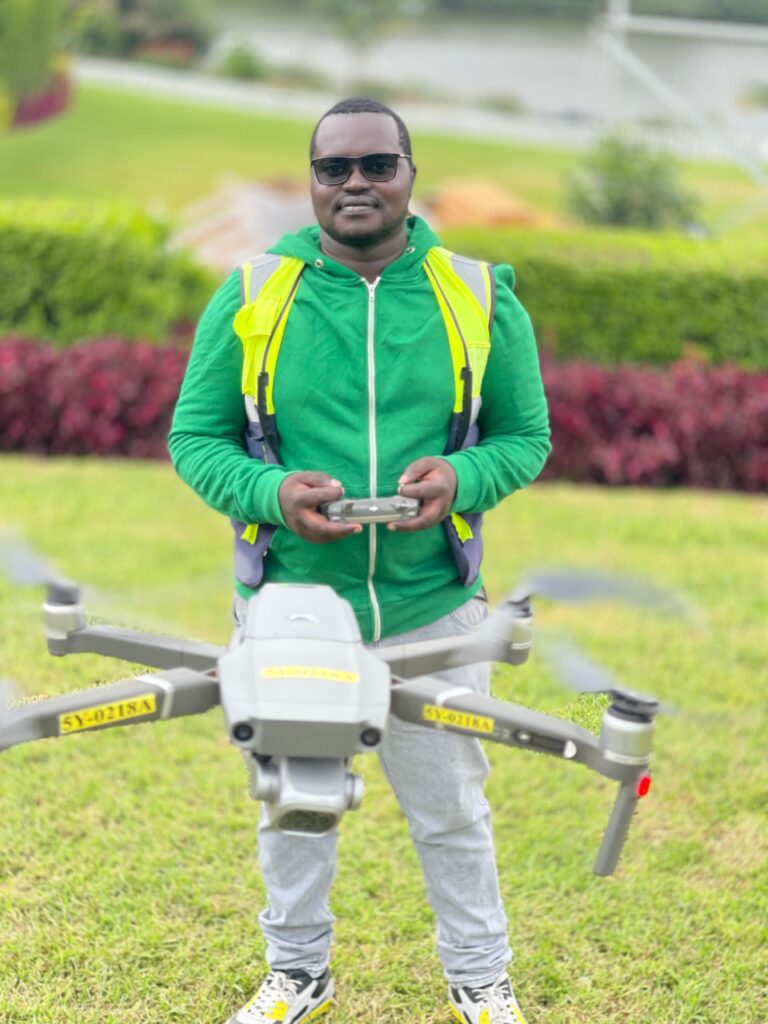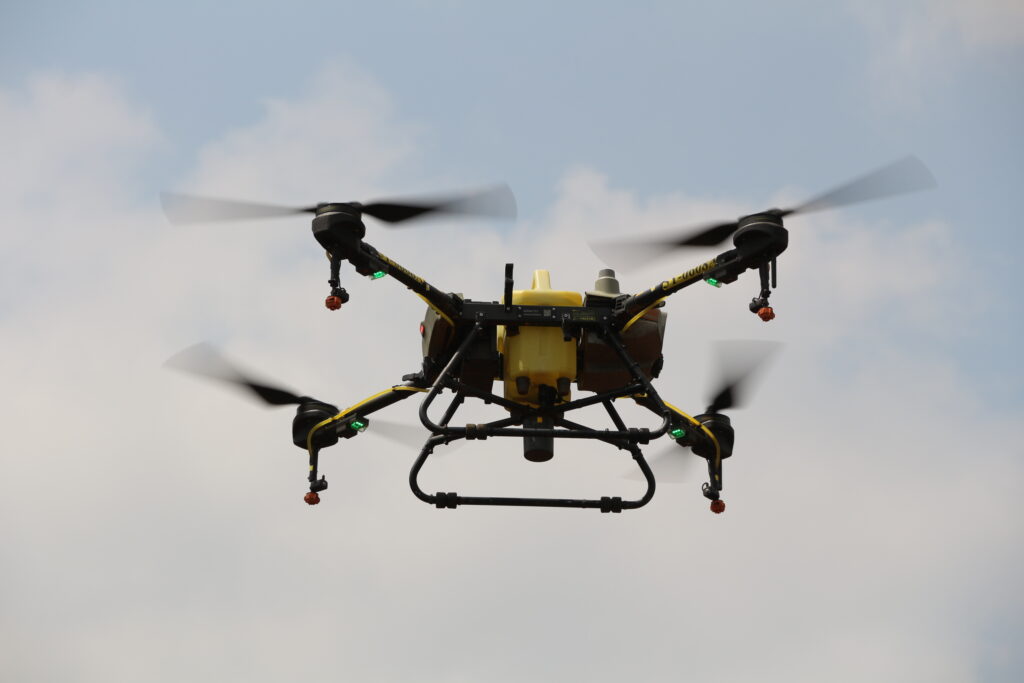By: Peter Karanja, AG Africa Ambassador
Advanced Air Mobility (AAM) is becoming a reality across Africa, and with it, new aviation technologies across the continent. In 2025, Africa claimed a series of achievements that set global precedents and illustrated its emergence as a leader in next-generation air transport. Governments, regulators, humanitarian agencies and technology pioneers continue to harness AAM to solve difficult mobility and infrastructure challenges. Africa’s skies have now become the proving ground for logistics, technology and community-driven solutions poised to impact the world.
Africa’s AAM Milestones: A Year of Firsts
This year has been a turning point for AAM in Africa, marked by a succession of “firsts” that reflect the continent’s significant progress. 2025 saw Africa earn an international reputation for pioneering drone and air mobility technology. Here are the standout milestones:

- Kenya hosted its first AAM symposium, organized by Fahari Aviation.
- The country approved East Africa’s first beyond visual line of sight (BVLOS) corridor to facilitate longer-range cargo and medical drone logistics.
- Kenya launched Africa’s first stratospheric UAV flight, crossing the 60,000-foot barrier.
- Rwanda staged the first passenger eVTOL demonstration flight at the African Drone Forum’s Aviation Africa Summit & Exhibition in Kigali.
- International Civil Aviation Organization (ICAO) brought together African civil aviation authorities (CAAs) and drone operators to share insights at a continent-wide workshop.
- Kenya introduced the first public UAS traffic management (UTM) platform beyond Zipline, signaling large-scale readiness for coordinated AAM operations.
These achievements form the foundation of a continental shift towards a shared vision to employ unmanned and advanced mobility solutions for enduring infrastructure and mobility problems. As one Kenyan regulator emphasized, “The future is important and it is digital. Let us prepare the region for safe, inclusive and profitable growth in unmanned and advanced mobility.”
Regulatory Alignment: Africa and ICAO’s Framework
For AAM to scale, strong regulation remains essential. Across Africa, CAAs are working to align their regulations with the ICAO framework, which divides drone operations into open, specific and certified categories.
Kenya offers a prime example. The country registered over 1,000 drones and has approved 2,700 flights since 2020. This year, Kenya pioneered both East Africa’s first BVLOS corridor and Africa’s first public UTM platform, which pushed well beyond Zipline’s earlier proprietary systems.
Nigeria has shifted from adapting manned aviation rules to a performance-based oversight tailored for drones and AAM.
Malawi has strengthened its status as a leader in the field by hosting the Kasungu drone corridor and maintaining a drone academy that draws international participation.
However, the regulatory journey in Africa still has challenges. Regulatory fragmentation across Africa’s 55 states makes it difficult to establish seamless regional corridors for cargo and passenger AAM. Leaders now see Regional harmonization, especially through economic and political blocs like the East African Community (EAC) and Economic Community of West African States (ECOWAS), as necessary. Given the emphasis on alignment with ICAO, perhaps RPAS (remotely piloted aircraft systems) will adapt to existing air traffic management (ATM) systems rather than disrupt them. Either way, integration remains a top priority across the continent.
Safety, Security and Public Trust: The Human Factor
Panelists at leading AAM symposiums repeatedly highlighted that Africa’s greatest challenge is not technical capability, but embedding a robust safety culture. While ICAO requires Safety Management Systems (SMS) for certified AAM operators, most African organizations lack the resources to execute them at scale.
Security threats such as UAS misuse. ranging from terrorism and payload dangers to airport disruption, have become increasingly prevalent. However, technical safety and aviation security represent just one aspect of the challenge. True acceptance and trust come from communities seeing tangible benefits in their daily lives.
Public skepticism often centers on the risk that AAM could become an elitist service, rather than an accessible public good. Concerns around noise, privacy and surveillance could undermine urban acceptance. Transparent incident reporting will be critical for overcoming these barriers.
To build credibility, experts point to several strategies:
- Publishing safety data for public review.
- Engaging communities before launching pilots, especially in densely populated urban areas.
- Showcasing lifesaving AAM uses, such as blood and vaccine delivery.
- Prioritizing pilot programs that directly serve the broader community, not just VIPs or tourists.
Acceptance in Africa’s skies will be earned on the ground, through transparency and meaningful engagement.
BVLOS Corridors: Powering Africa’s AAM Expansion
Kenya’s approval of its first BVLOS corridor signaled regulatory readiness for longer-range, risk-managed operations. This pivotal decision enables scalable networks for e-commerce cargo, medical delivery and scientific UAS missions.
BVLOS is essential infrastructure, but operational gaps persist. Detect-and-avoid (DAA) systems remain immature. Vulnerabilities from GPS jamming and lost command and control (C2) links are real. Wildlife disruption, both from migratory birds and resident species, also continues to pose operational risks. Past collisions with manned aircraft underscore the ongoing need for rigorous coordination and safety innovation.
Reaching New Heights: Africa’s Stratospheric UAV Achievements
Kenya’s landmark stratospheric UAV flight established Africa as a frontier for high-altitude technology. Successfully flying above 60,000 feet, the mission opened possibilities for climate monitoring, connectivity and aerospace research. It transformed Africa from an end-user of imported solutions into a testbed for cutting-edge innovation.
Urban Air Mobility: Rwanda’s eVTOL Demonstration
The first passenger eVTOL flight in Africa, staged in Kigali, delivered a powerful message: Africa is an active participant in the race to develop urban air mobility (UAM). While the demonstration was brief, its significance lies in proof-of-concept and the encouragement it provides for local policymakers and the public to imagine a transformative future for city transport.
Flagship Initiatives: Humanitarian and Commercial Air Mobility
Africa’s progress in AAM is visible in its trailblazing operators and life-changing implementations. Zipline stands out as the continent’s most experienced AAM operator, with 1.5 million flights and 17 million deliveries spanning Rwanda, Ghana, Nigeria, Côte d’Ivoire and Kenya. This partnership-driven approach provides a case study for aviation authorities globally.
The United Nations deploys over 500 small drones for mapping, cargo and medical deliveries, while the World Food Programme is testing vaccine and blood delivery corridors in new regions. ICAO’s policies now cover drones transporting hazardous goods, which legitimizes humanitarian missions and expands commercial potential.
Kenya Airways’ Fahari Aviation and Nigeria’s multi-sector drone logistics initiatives highlight regulatory and commercial diversity. Malawi’s Kasungu Corridor continues to serve as a critical hub for experimentation and training.
Operator Insights: Astral Aerial’s Lessons
Kenya’s Astral Aerial has underscored the power of AAM for crisis response and medical supply logistics. By rapidly flying emergency supplies across vast distances, the company proved the model for speed and coordination. Their involvement in agricultural spraying during the East Africa locust crisis revealed both the promise and pitfalls of complex drone and manned fleet coordination. Strict collaboration with ATC and military authorities, equipment standardization and integration of AI for swarm monitoring and routing will enhance future operations.

Catalyzing Investment: Financing AAM’s Growth
Financing remains the toughest hurdle for Africa’s AAM ambitions. Investors recognize the unique opportunity created by Africa’s young, mobile population and patchy ground infrastructure, but hesitate until proven commercial pilots trigger positive momentum. Creative strategies, from government guarantees and public-private ventures to leasing models and ticket surcharges, are in development. (See prior AG coverage relating to financing Africa’s AAM). Nigeria’s policy reforms under the Cape Town Convention offer a template to unlock foreign investment through regulatory clarity.
Sustainability and Social Integration
Environmental officials caution that AAM’s growth must not overload airspace or create intractable waste management issues, especially with limited lithium battery recycling. Electric aircraft promise sustainability, but remain tied to grids fueled by coal and heavy oil in many locales.
Despite these limitations, AAM offers significant upside by replacing diesel trucks and helicopters, launching hydrogen and SAF pilots and promoting youth involvement in STEM and recycling. Environmental stewardship and deep social integration will determine Africa’s sustainability journey.
Navigating the Road Ahead
Africa’s path to AAM leadership is paved with opportunity, innovation and challenges. The future holds promise for humanitarian logistics, e-commerce cargo corridors, UAM in major cities and world-class training hubs. Persistent hurdles include fragmented regulation, safety culture gaps, infrastructure needs and the imperative for public trust built on safety, affordability and privacy.
One ICAO official reflected, “Innovation will always outpace regulation. The challenge is finding the right moment to step in, not so early that you kill innovation, and not so late that you lose control.”
Africa as a Global Laboratory for AAM
Africa continues to transition from a proving ground to a leading force in AAM. From Kenya’s BVLOS corridor and UTM platform, to record-breaking stratospheric UAV flights and Rwanda’s eVTOL demonstrations, the continent has embraced a future filled with next-generation aviation. With harmonization, investment, environmental focus, and above all, genuine public trust, Africa’s groundwork will not only serve the continent, but influence solutions globally. As one UN official concluded, “Africa is moving from being a testbed to becoming a leader. What we build here will not just serve Africans — it will serve the world.”

